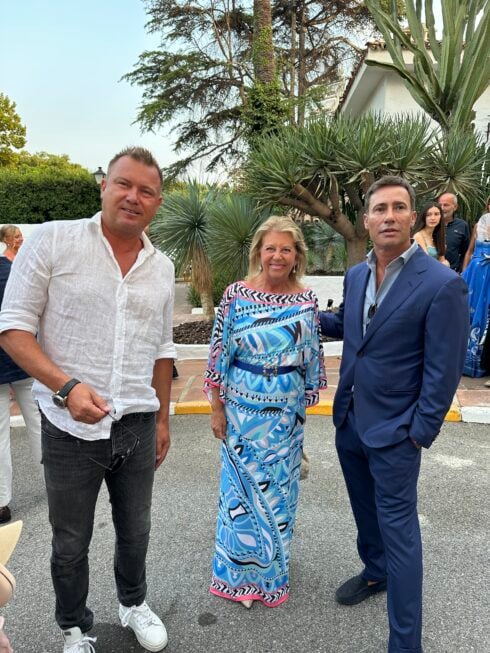THEY wear designer clothes, speak with theatrical accents, and wouldn’t dream of holidaying anywhere that isn’t painfully exclusive – but Spanish pijos aren’t quite what you think.
While they might look like aristocrats at first glance, these flashy figures of Iberian high society are a world apart from Britain’s discreetly posh elite or Mexico’s powerful young fresas.
In fact, the pijo is in a category all of their own – and it’s one that’s as entertaining as it is revealing.
In Spain, the word pijo doesn’t just describe how someone dresses – it’s a whole identity. Gustavo Egusquiza, expert in luxury tourism and a man who knows a Gucci loafer from a mile away, says it straight: pijos aren’t necessarily rich, but they want the world to think they are. “They want to be seen, recognised, imitated,” he says. Whether it’s the way they talk – full of exaggerated vowels and rolled R’s – or how they flock to the trendiest summer spots, pijos live for the image.
And that image is instantly recognisable: pastel polos with the collar up, boat shoes worn without socks, designer sunglasses permanently in place, and branded leather goods they can’t quite afford. It’s less about actual wealth, and more about convincing you they’ve got it.
Compare that to the British posh – a very different beast altogether. Over there, the truly posh don’t need to shout about their lineage. They’ve been through Eton or Harrow, spent a few years yawning their way through Oxford or Cambridge, and they probably own at least one crumbling estate in the countryside. Their accents are crisp, their manners impeccable, and they wouldn’t be caught dead in anything too loud. Think battered Barbour jackets, old cashmere jumpers with holes at the elbows, tweed skirts, pearls inherited from grandmother – an effortless uniform that whispers old money.
“Victoria Beckham? Absolutely not,” says Egusquiza. “Too visible, too new money.” Although pijos could be viewed as distant cousins to the 1980s yuppies of the UK, overall, in posh Britain, if you’re trying too hard, you’re already out.
Then there are the fresas of Mexico – young, rich, urban power players who are currently leaving their mark all over Madrid.

Their wardrobes reflect their status: impeccably tailored blazers, crisp white shirts, designer trainers, and a rotation of high-end handbags or watches. More sleek than flashy, they lean toward understated luxury – subtle logos, perfect fits, and the quiet confidence of people who don’t need to shout.
According to Egusquiza, these fresas are buying entire buildings in Salamanca, Spain’s most elite barrio. But unlike pijos, they don’t need to show off. Their power lies in influence, ownership, and mobility. It’s a quiet kind of dominance, one that doesn’t rely on flashy clothes or fancy accents – it’s just there, undeniable and effective.
What really separates these groups, Egusquiza says, is how they spend. The British go for excellence – fine hotels, impeccable service, perhaps a quiet jaunt on the Orient Express. Mexicans invest in high-value assets and global reach.
READ MORE: Cider from Spain’s Asturias makes it onto UNESCO’s Intangible Cultural Heritage list
But Spanish pijos? They’re after visibility. They want to be at the right beach club, the trendiest terrace, the most photographed festival. It’s not always about quality – it’s about being seen in the right place, even if you’re sipping cava on a budget.
For Egusquiza, the real luxury is the quiet kind. He points to boutique hotels like Palacio de la Helguera or Arbazo in San Sebastian, where service and subtlety are the true markers of class. “True luxury doesn’t shout. It whispers,” he says. But whispering isn’t really the pijo way. They’re about impact – the look, the statement, the selfie.
Even traditional pijo holiday spots like Baqueira, Palma, and El Puerto de Santa Maria are starting to suffer from their own popularity. When a place becomes too fashionable, says Egusquiza, it loses its exclusivity – and the pijo charm starts to fade. The truly wealthy, he claims, aren’t chasing the crowds. They’ve moved beyond the need to be seen.
In the end, the Spanish pijo is more than just a fashion statement or a stereotype. They’re a cultural phenomenon – louder than the Brits, less powerful than the Mexicans, but completely, unmistakably Spanish.
In a society where appearance often matters more than reality, the pijo has perfected the art of seeming wealthy. Whether they actually are? Well, that’s beside the point.
Click here to read more Other News from The Olive Press.








